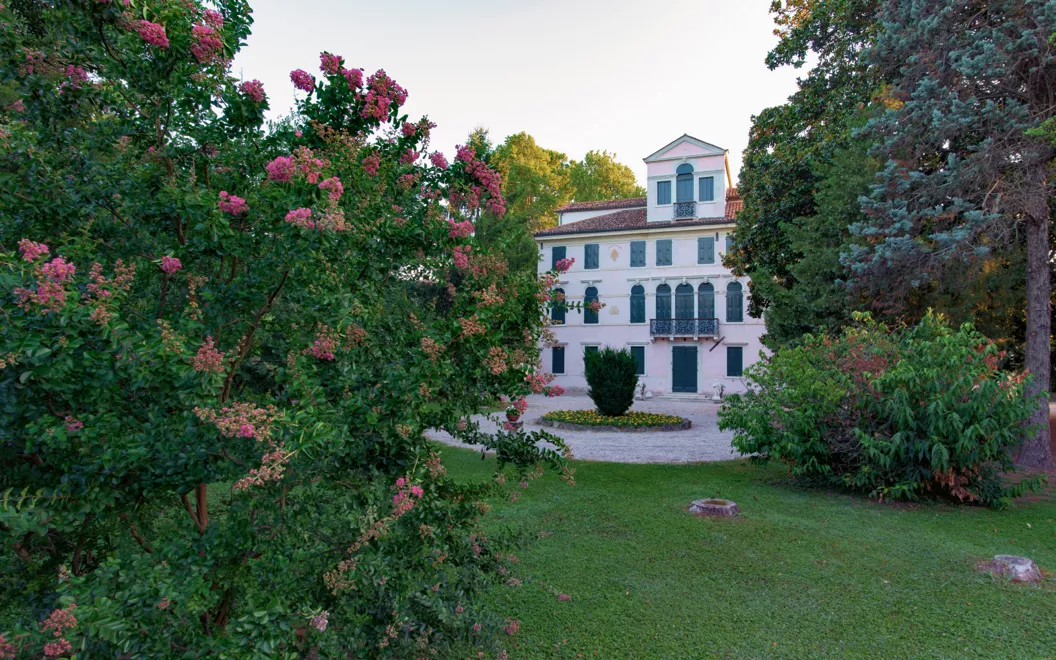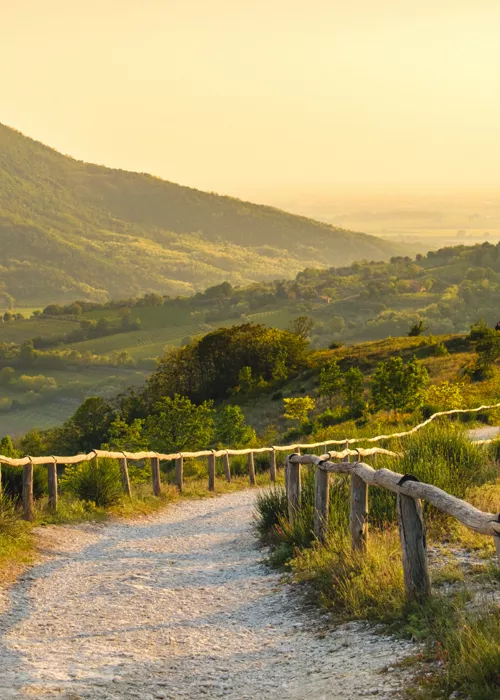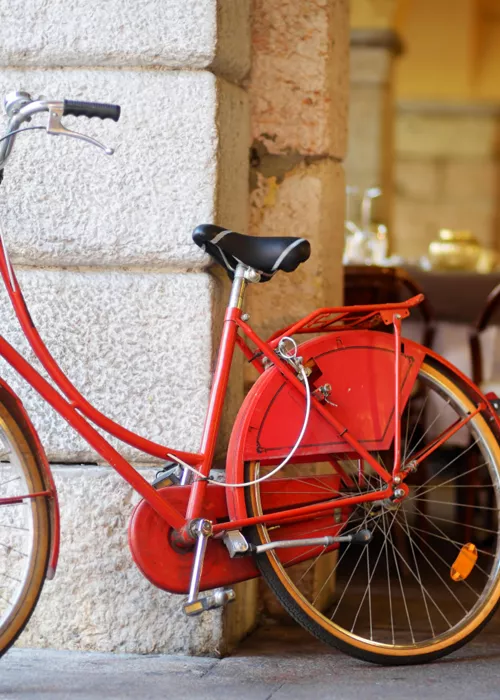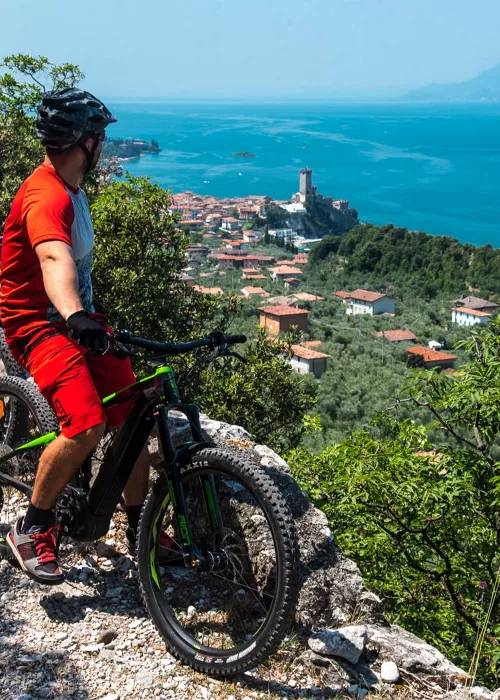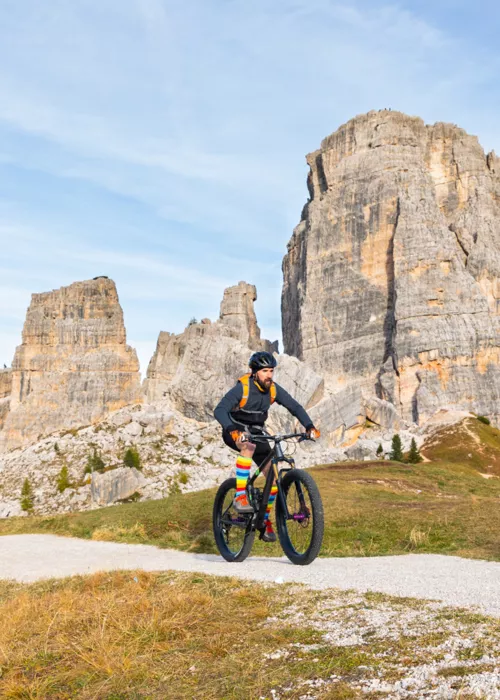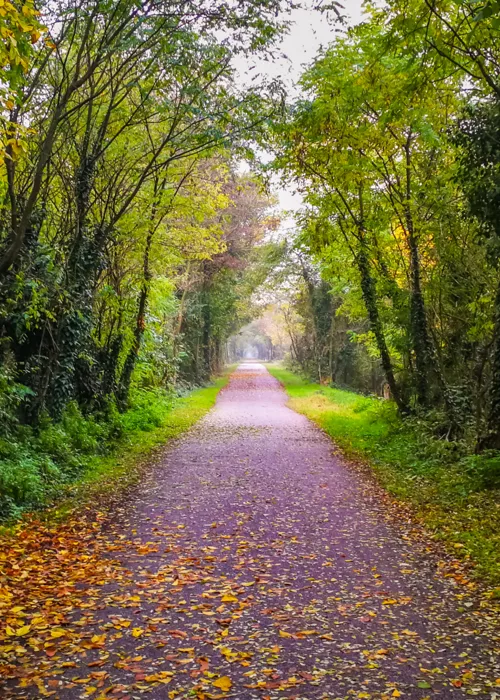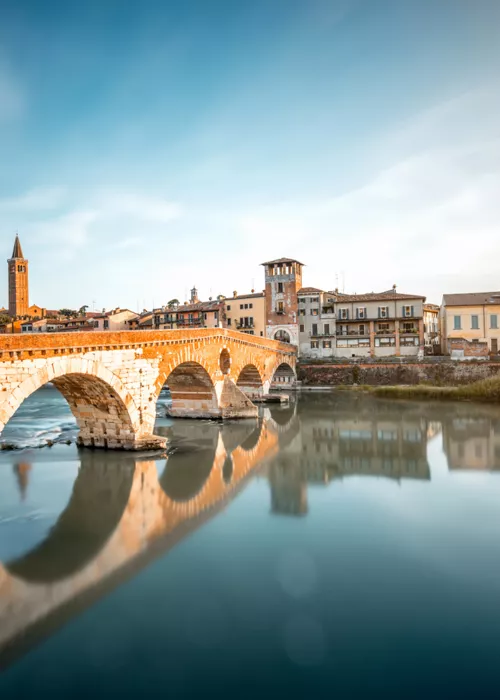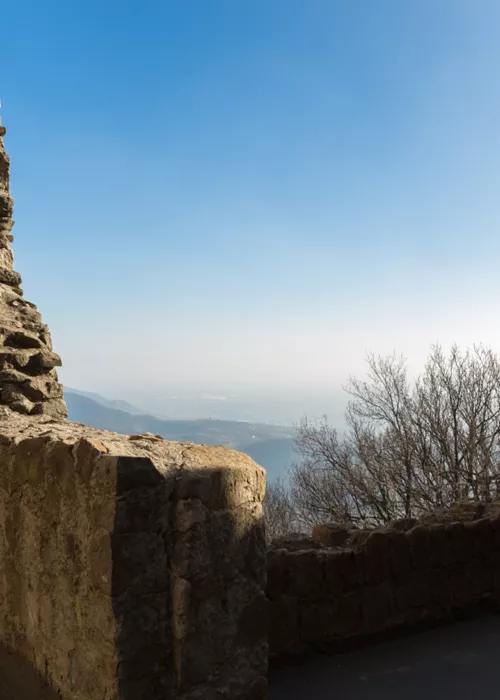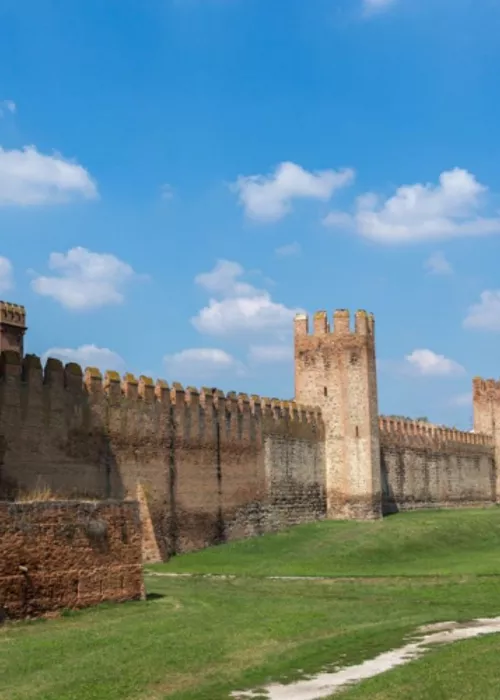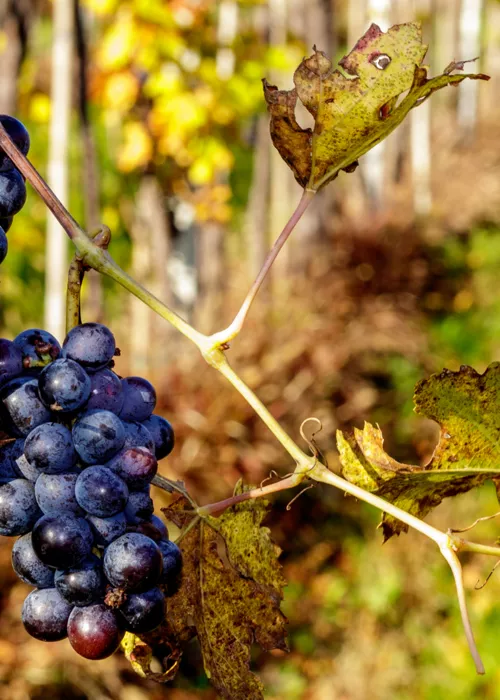Villa Valmarana ai Nani ('Villa to the Dwarfs') in Vicenza

Vicenza is "the city of Palladio", the 16th-century architect who designed many villas and several palaces in the Veneto region. His is also the design of the Basilica. Faced with this monopoly, one wonders if there are no other notable aristocratic residences in the hinterland of the Lagoon that were built in other ways or at other times. Well... There are.
The first resounding taste of 'non-Palladio' is on the outskirts of Vicenza: it is Villa Valmarana ai Nani, on the edge of the Berici Hills. It was commissioned at the end of the 17th century by the Venetian citizen and jurist from Vicenza, Giovanni Maria Bertolo, then purchased and enlarged about fifty years later by the Valmarana family, of Vicenza origin and belonging to the Serenissima's patriciate. The villa is best known for the extraordinary frescoes painted in the interior by Giambattista Tiepolo and his son Giandomenico. It may seem strange that rooms and masterpieces of this importance can be easily visited, considering that the Valmarana family still owns and lives in them today. Fortunately, this is not an isolated case in the Venetian mainland: today as then, opening them to visitors is a source of pride, but also the pleasure of sharing with others what one possesses: an important chapter in the history of art.
Villa Contarini

Just outside Padua the road runs past the Brenta river, whose powerful waters were essential to the establishment of early civilisation in the Pre-alps and lowlands, but have been feared over the years due to the exceptionally heavy flooding. It is no coincidence that in Veneto, the saying "una brenta" is like saying "lots of".
At Piazzola sul Brenta the river forms a spectacular conjunction with the lives and traditions of the aristocracy, which we see here enclosed in the walls of Villa Contarini.
Since the early days of Venice, the Contarini family have always played a leading role and are even mentioned in a 17th-century history of the Serenissima, "[the family] in the year 697 participated in the appointment of the first Prince, Marco Contarini." Nine times a Contarini has been elected as Doge, the highest ruler. His name was Marino Contarini, who commissioned the world-famous Ca’ d 'Oro along the Grand Canal. Sometimes, taking a step back through the centuries can help to give a better perspective of people and events.
The Contarini residence in Piazzola sul Brenta has a slightly less ancient history, but is just as interesting. The Villa, as impressive as it is elegant, is an integral part of the identity of Piazzola. Just as it did in the past, the headquarters of the G.E. Ghirardi Foundation (owned by the Veneto Region) still welcomes a rich programme of concerts, exhibitions and cultural events. The splendid halls of the villa, decorated with frescoes and fine paintings, were once the venue for memorable parties hosted by the Contarini family. In front, an avenue leads straight to the villa while at the back is the large and spacious park lined with trees, lakes, exotic plants and fishponds.
The Burchiello

On arrival in Padua, you might want to park the car and go in search of some Venetian villas the natural way: on water, in a ‘burchiello’. Today, 'Burchiello' is written with a capital letter and is a name covered by copyright: it indicates not simply a boat, but a freshwater navigation company that connects Venice and Padua, with stops at the main Venetian villas. But the name itself is a historic one. The original 18th-century 'burchielli' are immortalised in numerous prints and reproductions, of which perhaps the best-known is the one painted by Giandomenico Tiepolo. Three centuries ago, these river boats were used to transport passengers and goods. They were not motorised but powered by sails, oars and in some sections of river, even drawn by horses.
Today, the embarkation point for a cruise on the Naviglio di Brenta is in Padua, at the Scalinata del Portello. The first stretch runs along the Piovego Canal and passes in front of the Villa Giovanelli Colonna, while the Naviglio di Brenta starts at Stra, where you can stop to visit the Villa Pisani-National Museum, no matter whether you're travelling by car or by boat.
Villa Pisani - National Museum

Villa Pisani is certainly one of the sights worth seeing on the Burchiello trail. The thousand-year history of the Republic of Venice has as one of its heroes Alvise Pisani, the third son of one of the richest families in Venice during the 18th century. His villa in Stra, where the Naviglio di Brenta begins to head towards the Lagoon, is truly majestic. It includes, in addition to the main building, a park of a size and splendour that is simply awe-inspiring.
Considering its monumental size, a visit to the villa and its Park takes some time. There are many treasures to marvel at, scattered throughout the 110 rooms all designed by the finest Venetian artists of the 18th century. Highlights include the frescoed ceiling in the ballroom, where Giambattista Tiepolo depicted the glory and power of this noble family. Not a single artwork has been lost - not even when the villa was acquired by Napoleon, who refurbished the rooms in the neoclassical style in 1807, after which it passed to the Habsburgs and later to the House of Savoy. In 1882, the complex became a national monument.
If shoes and footwear are your thing, then leave some time to visit Villa Foscarini-Rossi, designed by Vincenzo Scamozzi in 1617-35 and later reworked by Giuseppe Jappelli. The villa is home to the Rossimoda Shoe Museum, which contains an original, fun and sometimes bizarre collection of women's shoes di , luxury and designer items from the 18th and 19th centuries.
Villa Pisani Park

When it comes to size, the Park lives up to the 110-room villa in every respect. It covers a green expanse of 11 hectares. Since Alvise Pisani, a series of famous characters have stayed here or even played a part in writing and painting the history of this place, from Eugenio de Beauharnais to the Empress of Austria, Marianna Carolina, the Spanish king Charles IV, the king of Naples Ferdinand II, not forgetting Richard Wagner, Gabriele d 'Annnunzio, Benito Mussolini and Adolf Hitler, up to Pier Paolo Pasolini. An obelisk recalls the attack on the Habsburg emperor Franz Joseph by a Hungarian irredentist.
The space still retains its 18th-century layout, with the central basin following a design reminiscent of Versailles and extending towards the Stables with their Ionic columns, tympanum, attic floor and various statues. The additions and alterations made to the Park during the 19th century, including the English Wood and the orange grove, have enhanced rather than impaired the original mood of surprising and bizarre. A real attraction in itself is the Maze: there is a spiral staircase so you can climb to the top of the central tower, which was probably designed to give help from above to lost companions or as a space to meditate on the elegance of the green gardens below. Another viewpoint is the Belvedere terrace, beyond the woodland, with beautiful views of the park and the banks of the canal.
Mira

Travelling along the Naviglio di Brenta towards the Lagoon, by car or on the Burchiello, you will see many other villas. Not all of them are open to the public, but some are certainly noteworthy.
Just past Dolo you come to Mira, after passing a number of noble residences built between the 16th and 18th centuries. At number 63 Via Nazionale, you might want to stop at the 16th-century Villa Alessandri which has a splendidly-preserved function room known as the Barchessa, definitely worth visiting (if you are not travelling by boat) for its 18th-century frescoes. On the opposite bank are the historic factories once owned by Mira Lanza, for many decades a manufacturer of popular consumer products such as candles and detergents.
Also in Mira is the Villa Valier, set in lush greenery with another 'barchessa' and a 17th-century chapel. Visits by appointment only. In Riscossa, a must-see is the Villa Widmann Rezzonico Foscari and its gardens - the next stage on our itinerary.
Villa Widmann Rezzonico Foscari

The Villa Widmann Rezzonico Foscari is located in Riscossa di Mira, just outside the village, and you can admire it along the banks of the Brenta waterway. It was built in the early 18th century by the Persian merchant Seriman, as a holiday residence. Only towards the end of the same century was it purchased by the Widmann-Rezzonico family, who rented it for a short time to the Foscaris before regaining ownership. The legacy is in the name and also in the appearance of the villa. The owners' Rococo taste is immediately evident from the outside. In the monumental park and historic garden you are immersed in a fairytale atmosphere: lovebirds, nymphs and soft stone statues can be seen everywhere, framed by flowerbeds lining avenues of lime trees and pines. There is also a spectacular pond, created in the 19th century .
The wonders continue inside the villa, which is richly decorated. The walls of the main hall are lined with pictures and stucco work, with a fresco illustrating the Glory of the Widmann family. Wherever you look, there are mythological or allegorical paintings by Giuseppe Angeli and Girolamo Mengozzi Colonna (Tiepolo's assistant), Rococo motifs and friezework, creating a riot of light and colour. Don't miss the 'barchessa' hall, typical of Venetian villas, with its collection of ancient carriages. This was the perfect setting for the parties and receptions held at the time. Today, this villa is publicly owned. It belongs to the Metropolitan Government of Venice and is a regular stop on the canal cruises. The visits often include the Park but also the Villa Valmarana, just beyond the Naviglio di Brenta. . If you arrive by car or bike, you can choose whether to continue towards Venice, as far as Malcontenta, less than ten kilometres from the Lagoon, or return to the hinterland of Stra, perhaps along the opposite bank of the canal.


